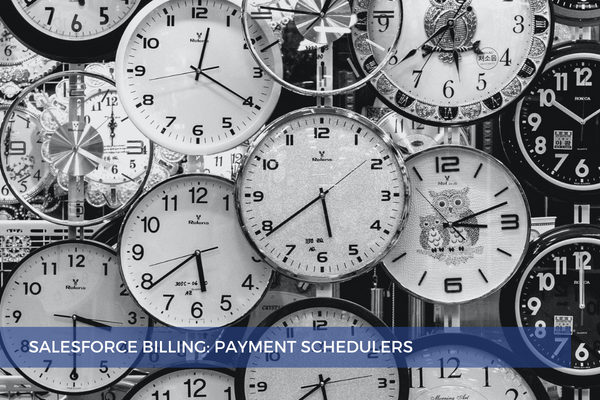
25
OctThe Payment Scheduler is a built-in functionality and it works similarly to the Invoice Scheduler, except that it doesn't create invoices, obviously, but creates payments.
Just like for the Invoice Scheduler, we have several types to choose from: one-time, daily, weekly, or monthly payments with the corresponding configurations.
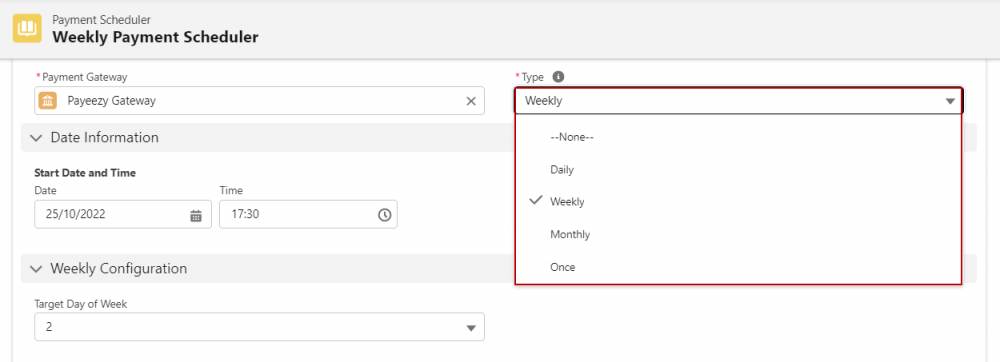
Target Date is the date when the Payment Scheduler runs if it's a one-time or when it runs first, for recurring schedulers. Note that for the Weekly Configuration, you've got 1 to 7 picklist values, and 1 stands for Sunday.
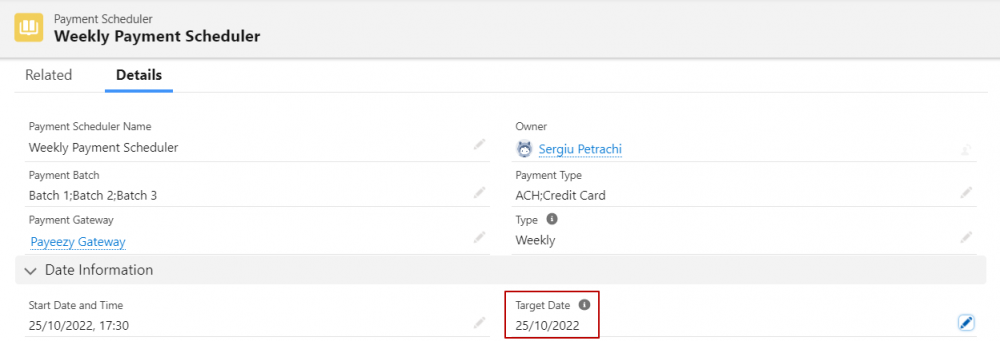
In the Start Date and Time fields indicate when the Payment Scheduler first runs. Remember to always set it to a future date and time, otherwise, you will get a validation error saying that the Start Date and Time are invalid, and they should be greater than or equal to the current date.
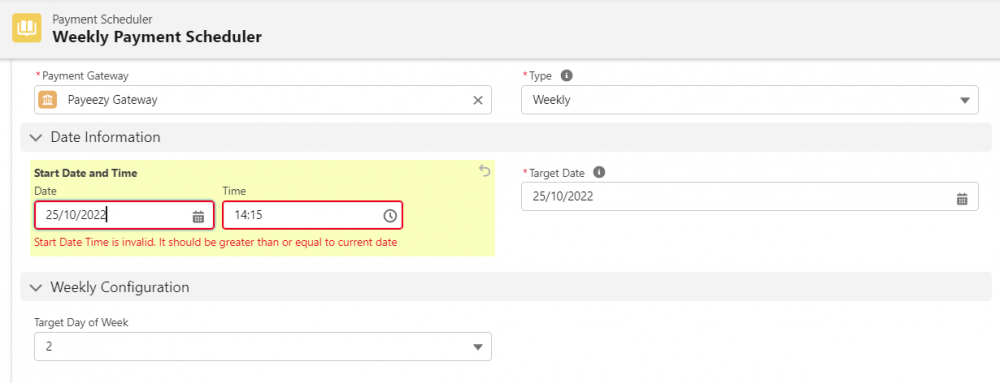
In the Payment Type field, we can select either ACH, Credit Card, or both. Meaning that you can either keep them separate, or you can run them at the same time. Note that a Payment Method can be used for recurring payments, in Payment Schedulers, by setting the Auto Pay field to True.
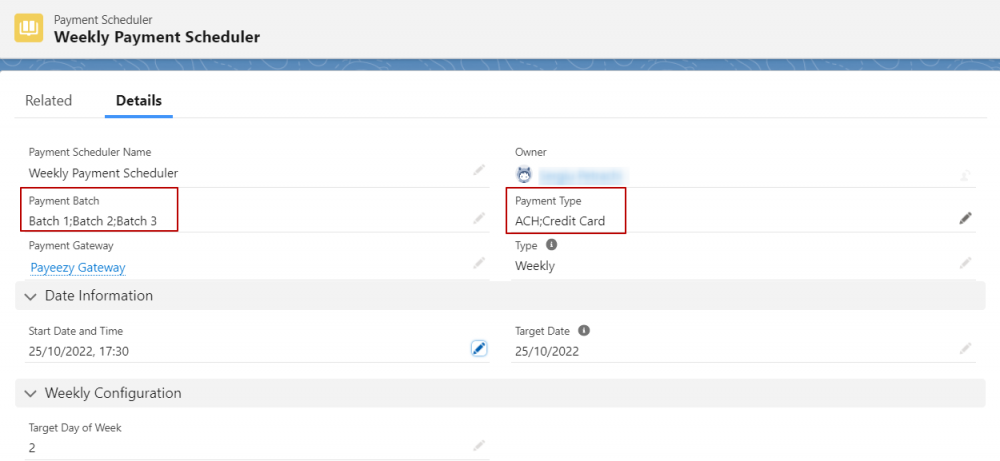
We can assign one or multiple Payment Batches to the Payment Scheduler to have it run only for the invoices we need. This is done by matching up against the Payment Batch value on the Invoice and it is very helpful if we need to control the performance of the Payment Runs by distributing the Payment Run loads so that we don't time out.

Once a Payment Scheduler is triggered, it performs payment runs taking into consideration the configuration. An account is included in the payment run if it has a payment method where the Auto Pay field is selected and the Payment Type value on it matches the Payment Type on the Payment Scheduler. Note that you can customize how the payment runs are handled. For example, the Override Autopay Payment Method field on the Invoice record, if populated, will take precedence over the Payment Method set on the account.
Comments (0)